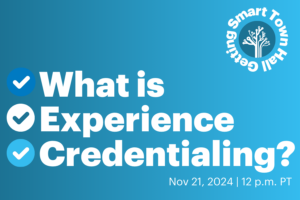When Glee Meets FIRST for Coffee and Leaves With an AA

College Board supports a network of 19 secondary schools in the northeast. College Board Schools serve predominantly low income students. The goal is to help each of them prepare for and successfully participate in Advanced Placement courses, graduate with college credit, and attend college. Given the college credit aspirations, CBSchools are similar to Early College High Schools.
CBSchools use Springboard, a pre-AP curriculum in the middle grades. Students use MyRoad, a Web-based tool, to explore majors, careers, and colleges. They take ACCUPLACER Diagnostic Tests and prepare for the SAT.
Yesterday, I suggested that there are 10 reasons that every district should open a flex high school. Let’s put these two concepts together. College Board should develop CBFlex, a school-in-a-box (i.e., easy to implement school model plus implementation support services) featuring all the stuff in CBSchools but in a high access flex format. In one small school, students could access every AP course taught by the best teachers in the country while benefiting from a local advisor that monitors their progress.
Imagine a school that looks more like Starbucks with a black box theater and a project lab—Glee meets FIRST Robotics for coffee. When students attend competitions, no problem, the school goes on the road. The whole school is cloud-based and completely portable.
Let’s fast forward two years when 10,000 students are in the CBFlex network and half of the 5 million students taking AP courses are online. Dynamic Grockit-like groups will support student success. By 2014, more AP content will be adaptive and engaging; there will be less need to slog through content as a local cohort. Students will pick from multiple pathways and multiple instructors.
Now add an accredited competency-based entrepreneurial organization like University Now and you have a college as well as a high school. Students could spend three or four years at a CBFlex and leave with an AA degree.
CBFlex could be built in conjunction with one or more content partners willing and able to invest in curriculum development and dynamic student support services. It’s just one example of the cool developments that David Coleman will be able to support at College Board. (Here’s why it’s a big deal that he’s going to College Board)







Danielle Lamb
What a wonderful tie in to yesterday's post. Like you stated, this is a great example of how beneficial the flex program can be to education. The goal of helping low income students have opportunities at furthering their education is something that is greatly needed. This program combined with the flex model has the potential to reach a wide range of students that may not have the access to great teachers. Wonderful!
Danielle
NCSU
Dr. Setser ECI 509